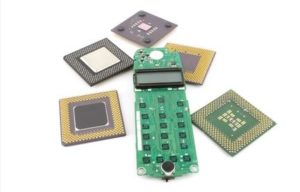 You may not have necessarily realized it, but there’s a good chance that you have used a silicone keypad over the course of the last few days. There are many computers, phones, calculators, and more that rely on silicone keypads to perform their basic functions. These silicone keypads may not look like anything special from the outside, but they are actually sophisticated tools used to keep different electronics running properly.
You may not have necessarily realized it, but there’s a good chance that you have used a silicone keypad over the course of the last few days. There are many computers, phones, calculators, and more that rely on silicone keypads to perform their basic functions. These silicone keypads may not look like anything special from the outside, but they are actually sophisticated tools used to keep different electronics running properly.
How Silicone Keypads Work
All silicone keypads work a little bit differently. But in general, each keypad operates by forming an angled webbing around a switch center in an electronic item. When you press down on one of the keys in a silicone keypad, the webbing deforms, and when it does, it creates what is called tactile feedback. Then, when you let go of the key you pressed, the silicone keypad returns to its original form with no tactile feedback present. That simple action is what results in a letter, number, or other symbol showing up on your electronic’s screen.
Not all electronics utilize silicone keypads these days, but there are quite a few that do because of the advantages that come along with them. One big advantage is that silicone keypads are made up of one single layer of silicone, which prevents dirt and dust from getting down into them. It also prevents moisture from affecting these types of keypads. The same cannot be said for standard keyboards that will stop working if too much dirt or dust or any moisture gets down into them.
At Northpoint Technologies, we have been creating silicone switches for two decades now. We have improved upon them greatly over the years and can supply you with superior products for your company. Call us at 915-591-6300 today to check out the silicone switches we have available at the moment.






